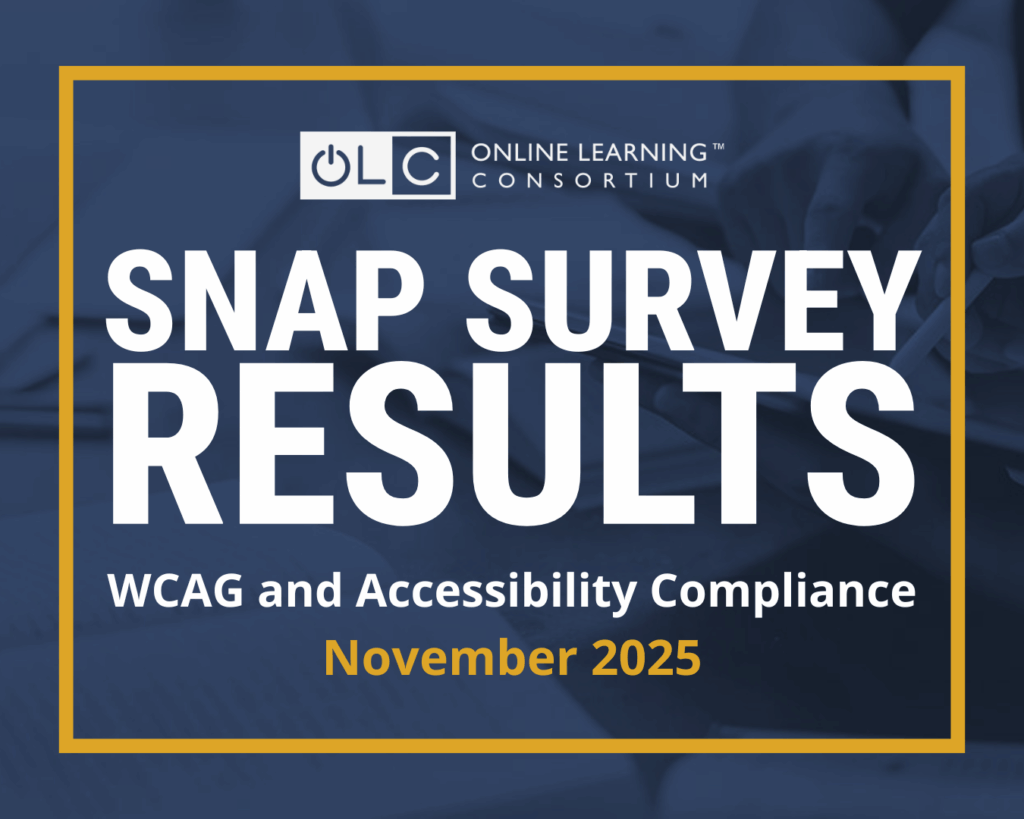Remote colleges may have traded traditional breakroom chats for Slack threads, but that doesn’t mean silos are a thing of the past. Without watercooler conversations and impromptu gatherings, departments can drift further apart than ever before. The technology meant to connect us can deepen these divides when left unchecked.
Senge (2006) explains that silos form when a successful service becomes overconfident, overly specialized, or protective, making it less adaptable to change. Briody and Erikson (2016) add that internal units develop isolated processes, practices, and values, creating “impenetrable” cultures. These silos hinder collaboration and productivity as communication narrows and shared goals fade (Jeske & Olson, 2025). The result? A disjointed experience for students, departmental inefficiencies, and loss of collective knowledge.
This is why collaboration matters so much in a remote college environment. Without a shared physical space, viewing the institution as a unified entity working to serve students becomes even more critical. While the challenge of virtual silos may seem daunting, institutions can take concrete steps to build bridges across digital divides. The following strategies, synthesized from our experiences across academic and administrative roles in online colleges, provide a framework for creating meaningful connections in remote educational environments.
1. Foster a Culture of Shared Purpose and Transparency
Creating a culture of shared purpose and transparency begins with encouraging informal sharing through communication channels, such as Microsoft Teams, Slack, or Discord, where colleagues can connect outside formal meetings. Virtual events and activities help build camaraderie and trust. These initiatives, from holiday parties to fun awards, pet parent committees, and photo-sharing activities, help combat the isolation often associated with remote work. Even simple gestures like distributing college logo apparel contribute to a sense of belonging and shared identity. For example, our department has hosted weekly “show and tell” sessions where team members share personal hobbies and teach them to the group, leading to unexpected connections and collaborations.
A strong virtual onboarding process is critical for integrating new remote hires into the culture. New employees must understand communication protocols and tools from day one to feel connected to their colleagues and the institution’s mission. Activities involving small teams, larger departments, and college-wide participation help new employees acclimate to the culture and see how company values are embedded throughout the organization. Our college hosts monthly “Empower Hours” where staff from different departments take turns sharing their expertise, departmental processes, and best practices while answering questions from attendees.
Implementing college-wide performance goals contributes to individual growth while supporting departmental and institutional objectives, creating alignment across all levels. To enable this transparency, institutions invest in data infrastructure and develop governance policies supporting centralized data and reporting systems (Muscanell, 2024). These include integrated systems through the LMS (Canvas) and APIs and shared dashboards that provide all departments with visibility into institutional metrics. Our college’s student success dashboards track retention, academic progress, and program effectiveness to inform strategic improvements across multiple departments. When institutions combine data democratization with transparent processes—such as opening their accreditation review process—they break down informational barriers and help individuals see how their work contributes to institutional goals.
2. Champion Diverse Communication Channels
“Oh, just shoot them an email or ping them on Teams!” – a phrase many in remote settings often hear. We rely on emails and instant messages to send important information and keep our teams in the loop. However, how often do emails get ignored, taken out of context, or lack the intended emotional connection? How do employees know when to follow the chain of command versus when to send a college-wide Teams message about the upcoming fantasy football draft?
Organizations that prioritize intentional communication infrastructure recognize that effective remote collaboration requires more than simply deploying multiple tools. It demands the strategic implementation of diverse channels that serve different purposes. Communication norms must be established within organizational culture so new employees can seamlessly integrate and participate in the digital workspace. For example, creating a communication hierarchy chart clearly outlines which channels to use for messages (urgent issues via phone, project updates via Asana, and social interactions via specific Teams channels), preventing confusion and ensuring important information reaches the right people.
A critical component involves synchronous online communication, which allows team members to see one another as human beings beyond the name on a screen. Regular meetings with clear expectations help attendees feel more at ease and ready to participate meaningfully. Before any meeting, participants should know:
- The agenda, so they can prepare to contribute effectively
- Whether cameras need to be on
- Expectations for attire
- The anticipated timeframe to plan their workday accordingly
While established meeting expectations set the tone for productive group discussion, informal coffee chats, virtual happy hours, and impromptu check-ins help build community and foster personal connections. These real-time interactions work in tandem with asynchronous collaboration tools, which can significantly boost team productivity by enabling each person to work independently while contributing to group objectives.
Platforms such as Google Drive, SharePoint, and OneDrive provide teams with collaborative spaces to exchange ideas and develop content together (Patrick, 2021). Project management tools like Wrike, Asana, and Jira enable teams to visualize shared progress toward project goals and maintain accountability without constant real-time coordination. Our curriculum development team might use Wrike to track course creation milestones while utilizing SharePoint for collaborative script writing, allowing team members across time zones to contribute at times that work best for their schedules.
Finally, cloud-based HR communication portals with features such as announcements and recognition systems ensure essential information reaches all staff members consistently. These platforms also create dedicated spaces to celebrate colleagues’ successes, fostering a culture of encouragement and collaboration through structured meetings, personal connections, and shared goals.
3. Empower Through Trust and Autonomy
Collaborative culture in any organization requires two key elements: employees must know their leaders care about the work they contribute and who they are as people. This dynamic is especially true in remote work environments.
For leadership in these settings, it can be easy to fall into the pattern of traditional work environments and feel the need to check in, oversee, and direct projects constantly. However, employees who choose work-from-home careers often do so to escape that constant grind and feeling of mistrust. Instead, remote work should embrace what makes it appealing: the flexibility and autonomy that allow employees to integrate work into their lives rather than vice versa. A work-from-home lifestyle should afford small flexibilities: a quick load of laundry, a moment to make another cup of coffee, or time to feed the dog. These freedoms help employees feel valued for their work contribution, not the time spent at their desks.
This everyday trust builds psychological safety—the foundation of high-performing teams. Employees who feel trusted are more likely to ask questions, share ideas, and collaborate across departments (Lechner & Tobias Mortlock, 2021).
This trust-based approach extends beyond individual work habits to how employees interact within teams and the broader organization. Employees who feel secure in their roles and valued for their contributions are less likely to hoard information or protect their territory. This openness makes them more willing to share resources and collaborate across departments, naturally preventing organizational silos. For example, when our student success team was given autonomy to analyze tutoring data, they proactively shared patterns of student struggles with the curriculum development department. This voluntary collaboration led to targeted course revisions to reduce failure rates and student frustration, which would not have happened if the data had remained siloed.
Beyond trusting employees to manage their work effectively, leaders must also demonstrate genuine care for team members as individuals with lives, interests, and needs beyond their professional responsibilities. Remote work should enhance work-life balance, not simply relocate traditional office pressures to employees’ homes (Sati & Vats, 2024). This commitment may include:
- Encouraging the use of paid time off (PTO) to rest and recharge
- Providing time off for civic duty so employees stay plugged into their communities
- Intentional celebration of successes, both professional and personal
- Remaining flexible so employees can be present for important personal life circumstances, such as doctor appointments or family events
Final Thoughts
Breaking down virtual walls in remote colleges requires intentional effort and sustained commitment. Institutions can transform their distributed teams into a powerful, cohesive force by investing in a culture of shared purpose, transparent protocols, and empathetic leadership. The result is a more agile, engaged, and student-focused educational environment where every department contributes to collective success. As remote learning continues to evolve, those institutions that master the art of virtual collaboration will be best positioned to serve their students and achieve their educational missions.
References
Briody, E. & Erickson, K. C. (2016). Success despite the silos: System-wide innovation and collaboration. In M. McCabe (Ed.), Collaborative ethnography in business environments. Taylor & Francis.
Jeske, D., & Olson, D. (2025). Silo mentality in teams: Emergence, repercussions and recommended options for change. Journal of Work-Applied Management, 17(1), 20–33.
Lechner, A., & Tobias Mortlock, J. M. (2022). How to create psychological safety in virtual teams. Organizational Dynamics, 51(2).
Muscanell, N. (January 8, 2024). 2024 higher education trend watch. EDUCAUSE. https://www.educause.edu/ecar/research-publications/higher-education-trend-watch/2024
Patrick, B. (2021). 3 tips for remote collaboration with OneDrive, Teams. Journal of Accountancy, 231(1), 1–13.
Sati, K., & Vats, A. (2024). The impact of remote work on productivity and work-life balance. Indian Journal of Health & Wellbeing, 15(4), 594–598.
Senge, P. M. (2006). The fifth discipline: The art and practice of the learning organization. Crown Business.
Carla Huck, Ed.D., brings two decades of expertise in K-12 and higher education leadership, curriculum design, and academic research to her role as Academic Quality Manager at American College of Education. She collaborates cross-functionally with multiple stakeholders to maintain educational excellence while applying best practices in learning design, andragogy, and digital innovation.
Dr. Anica Cisneroz holds a Ph.D. in Curriculum and Instruction and currently serves as a Curriculum Development Specialist at American College of Education. With over a decade of experience working at remote institutions, she is passionate about fostering collaboration and connection among distributed teams and developing innovative strategies for remote workers to build meaningful professional relationships across digital environments.





